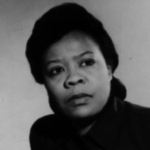She Invented the Future: 5 Women Inventors Who Changed the World
As we celebrate International Women’s Day today, it is important to acknowledge the immense contributions that women have made to the field of invention despite the numerous barriers and discrimination they have faced throughout history. From revolutionary medical devices to groundbreaking technological advancements, women inventors have left an indelible mark on our world. In anticipation of World Intellectual Property Day on April 26, 2023, the theme of which this year is “Women and IP: Accelerating innovation and creativity”, we highlight five of the most famous women inventors and their game-changing inventions. Join us as we celebrate these brilliant women and their invaluable contributions to innovation and creativity.
- Hedy Lamarr (1914-2000)
- Patricia Bath (1942-2019)
- Ada Lovelace (1815-1852)
- Bessie Griffin (1914-2009)
- Marie Curie (1867-1934)
Hedy Lamarr (1914-2000)
Hedy Lamarr was a famous actress in the 1930s and 1940s, but she was also an inventor. During World War II, she and her co-inventor, George Antheil, developed a frequency-hopping technology that could prevent enemies from jamming torpedoes’ signals. This invention laid the foundation for modern-day Wi-Fi, Bluetooth, and GPS.
Patricia Bath (1942-2019)
Patricia Bath was an American ophthalmologist and inventor who developed a laser-based treatment for cataracts. Bath’s invention, known as the Laserphaco Probe, uses a laser to vaporise cataracts and remove them from the eye. Her technique has been used to restore vision in millions of people around the world, particularly in underserved communities where access to eye care is limited.
Ada Lovelace (1815-1852)
Ada Lovelace was a mathematician and writer in the 19th century. She is known for her work with Charles Babbage on the Analytical Engine, which is considered the first computer. Lovelace wrote the first algorithm designed to be processed by a machine, making her the world’s first computer programmer.
Bessie Blount Griffin (1914-2009)
Bessie Blount Griffin was a physical therapist and inventor who developed an electronic feeding tube that could be activated by biting down on a tube held in the mouth. Griffin’s invention was initially developed to help disabled veterans who had lost their limbs, but it was later adapted for use in hospitals and nursing homes to help patients with disabilities or paralysis to feed themselves. Griffin’s work on assistive technology paved the way for future developments in the field of rehabilitation engineering.
Marie Curie (1867-1934)
Marie Curie was a physicist and chemist who is known for her pioneering work on radioactivity. She discovered two new elements, radium and polonium, and developed the theory of radioactivity, which led to significant advancements in medicine and energy production.
These women and many others have made incredible contributions to the field of invention, often in the face of significant barriers and discrimination. Their work has not only improved the quality of life for countless individuals, but has also paved the way for future generations of inventors, regardless of gender. It is our responsibility to ensure that their legacy lives on and that we continue to strive for a world where all individuals are given equal opportunities to innovate and create. Let us continue to celebrate and uplift women inventors who inspire us all to push boundaries and pursue our passions, no matter the obstacles we may face.






